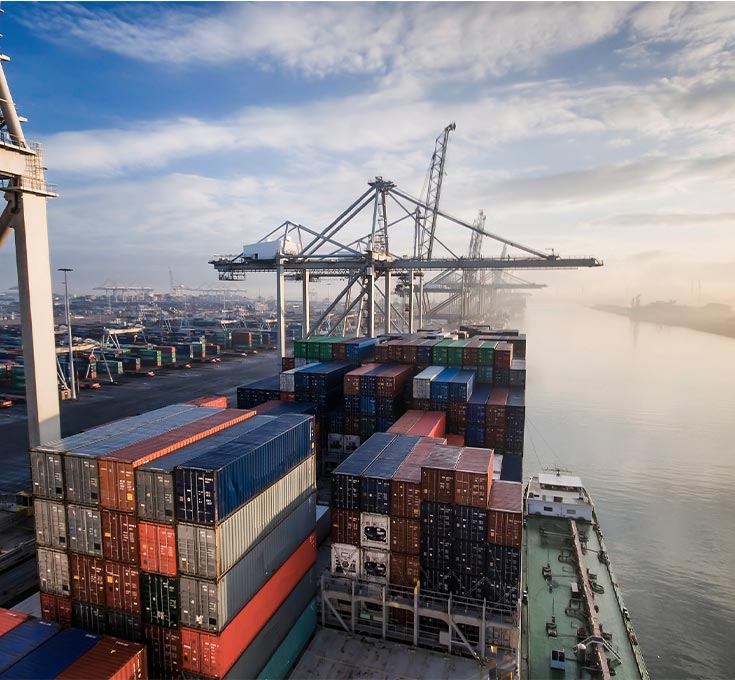Guests: Mike Lawford, President and COO, NuVista Energy Ltd.
Host: Aaron Bilkoski, Equity Research Analyst, Energy Producers, TD Cowen
TD Cowen analyst Aaron Bilkoski talks with NuVista's, President and soon-to-be CEO, Mike Lawford. The pair discusses Mike's background, the underlying drivers of NuVista's growing production targets, the evolution of the company's shareholder return strategy, and the scarcity of public pure-plays in the oil/condensate window of the Alberta Montney.
This podcast was recorded on November 19, 2024.
Speaker 1:
Welcome to TD Cowen Insights, a space that brings leading thinkers together to share insights and ideas shaping the world around us. Join us as we converse with the top minds who are influencing our global sectors.
Aaron Bilkoski:
Hey everyone. I'm Aaron Bilkoski. I'm a Calgary-based research analyst at TD Cowen specializing in the Canadian oil and gas sector. We're here live at the TD Cowen Energy Conference in New York. With me today is Mike Lawford from NuVista Energy, one of the few remaining condensate-weighted Alberta Montney producers. Mike's been with NuVista since 2012. He's currently president and chief operating officer. At the start of 2025, he'll be the sole president and CEO with Jonathan retiring from the management team at the end of this year. Jonathan has historically been the public face of NuVista for the most part. He's been an outspoken advocate for the company. He's been an outspoken advocate for the industry in general. But I'd like to start by hearing a little bit more about you. So if I take this back to a bird's eye view level, how did you end up at NuVista to begin with?
Mike Lawford:
Yeah, for sure. Thanks, Aaron. Thanks for having me. I feel like I'm on Larry King Live here. That's pretty exciting, so thanks for having me. So I'm a geologist by training, and so I don't think generally people would expect that there's a lot of geologists that ended up becoming CEOs, but I do believe I'm in good company with the likes of Mike Rose and Jim Riddell and various others. So I started my career actually at the same company that Jonathan started out at Talisman and I worked not directly with him there, but worked behind him moving up through the organization throughout the years, and I was at Talisman when he resigned actually, and to take the job at NuVista.
And I remember that day, I bought, it wasn't a lot of money from me, but I bought... It was quite a bit of money from me actually, now that I say that, money of NuVista shares and sent him an email asking if I could join him over at NuVista and it took six months for me to convince him, but I joined him not too long after that, on the back of him as a person and as a leader, but also just with my understanding of NuVista's assets and where this Montney position, what it could become one day.
Aaron Bilkoski:
At the time, if I remember correctly, going back to 2012, the Montney in that region was just in its infancy. I think he had just drilled a few wells. How has it evolved since the time you joined to now?
Mike Lawford:
So it was a great idea when I joined. Six wells in, no production, a couple wells that cost $18 million versus the $7 million we're spending now. I think both Jonathan and I were wondering what we'd done. The free cashflow generating ability of the base assets was really struggling as well, but there was a commitment I think that we made technically to the rocks just knowing and understanding how well things were working at Seven Gens with their assets, how well we understood the condensate rich part of the Eagle Ford was working at the time and the board made the commitment after those six wells, that we're going to give it a shot. And so we put together some fairly hefty capital programs, outspending cash flow in an effort to grow using the balance sheet, and really gained some momentum over the next handful of years before 2018 came and we made the decision to make the acquisition of the Pipestone assets.
Aaron Bilkoski:
Now, you've obviously come a long way since then and even advanced those assets in a material way since then. I think when people think about NuVista, even today, there's this misconception about you being a gas company. When you look at your business, what portion of your revenue comes from natural gas and what comes from C5 plus?
Mike Lawford:
So that's a good question. So by volume, we produce about 65% gas, 5% NGLs, 30% condensate, and it's been like that for 13 years, since the first 5,000 BOE per day till this quarter, Q4 here will be around 90,000 barrels a day, and it's been consistently between 29% and 31% on average. And depending on where relative oil and gas prices shake out, it's generally been between about 60% and 70% of our revenue. So we really do watch the price of WTI a lot more closely, but at the end of the day, I think we've really stood out as pioneers for our size of company and with diversifying our gas markets. And that's really been a big bonus over and above being a condensate weighted company. We sell less than 20% of our gas at ACO every year, and the balance of it would be split roughly equally between all of the five sales points in North America.
Aaron Bilkoski:
Yeah, when I look back at how NuVista's evolved over the years, I think that's one area where you were punching above your weight class, you would recognize the value of marketing before I think a lot of the junior peers did. You hired Kevin, he built out that business in a good way.
Mike Lawford:
Yeah, for sure. Yeah.
Aaron Bilkoski:
Oh, that's great. If I can turn the conversation a little bit to inventory and long-term growth targets, I think a lot of companies toss out these large inventory numbers or very large, long-term production targets. I think NuVista has always been very careful with what I'll call self-promotion and laid out numbers that were historically conservative and tangibly achievable. When you think about what you've laid out in terms of inventory and growth targets, what's underpinning those numbers?
Mike Lawford:
Yeah, it's funny because I had some notes in advance of taking the podcast on. Looking back at what we'd said over the years, I knew this had come up as a topic and I pulled out our slides that we presented to our board when we purchased the Pipestone assets. So if you think back then, we were about 40,000 BOE per day, had growth plans to grow to about between 50 and 60,000 barrels a day. Would purchase those assets. They included 10,000. It was the only barrels of production actually that we've purchased over this whole journey and included 10,000 barrels of production. But we laid out a plan for the board to grow the assets to 90,000 barrels a day by 2023. So you think about what happened while we hit pause for two years during COVID and in Q4, we're going to average 90,000 barrels a day.
And so what's been underpinning the growth beyond 90,000 for us has been all inventory driven and the feedback loop from the piloting we've been doing, particularly in the lower Montney. And so when we set out in '20... Well, it was really 2021 when we started hitting the gas pedal on Pipestone, we started on day one with three bench development, so lower Montney wells on every pad, and then at least two wells in the middle Montney. And the results have been unbelievably consistent. You look through our corporate presentation and we've got the annual cum. gas over time, cum. concentrate over time and just the annual numbers lay over top of one another. And so what that did is it gave us enough confidence to backstop a new plant that's being built by CSV at Albright, which is expected to come on at the end of the first quarter, and that's another 10,000 BOE per day of growth. So that's taking us up to a hundred of full capacity, which will fill in the second half of 2020.
The second part of the inventory expansion has been the feedback loop from the lower Montney at Gold Creek. So we had originally built that asset to be 8,000 barrels a day developing the core, like the middle 25% of our acreage there BC that was all that was delineated in one single zone. And so over time, in particular was Paramount to the east of us, was drilling fully co-developing the lower Montney and the middle Montney, having great results. We took a bit slower approach, did a couple pilots two years ago, and then as you know at the beginning of 2024, we piloted our first six... Well, co-developed lower Montney, middle Montney pad. It's the best pad we've ever drilled. And so we took that what became a 40-year inventory life and said, "Well, we need to pull some of this PV forward. Let's look at infrastructure expansions in the area." So we sanctioned 25,000 BOE per day of infrastructure expansion that'll happen between '26 and '28, and that really is the path for the company on the inventory side.
Aaron Bilkoski:
That's great. If I could shift gears a little bit again. If I look back to what was released in Q3 for you and all your peers, a lot of people reiterated what they had already said, most pushed updates to the five-year plan out to say January of 2025. You guys did something a little different. There's a tangible shift to your capital allocation strategy. Can you talk a little bit about what changed and maybe why it changed?
Mike Lawford:
Sure. Yeah. I could even go back to how it's changed over the last five years. We allocated capital to growth at all expenses. Back in 2017, 2018, we were using the balance sheet outspending cashflow to grow. All that changed coming out of COVID and the priority for capital allocation shifted immediately and a 100% to balance sheet repair. That all actually fortunately for most of us, happened quite quickly in 2022 with a $100 oil and $5 gas. And so us, as many of our peers did, we implemented a capital return strategy which targeted 75% of our free cash flow coming back to the shareholder in the form of buybacks. The other 25% early on in that program was still needed to be allocated to the balance sheet. So we built out a capital plan that met our obligations on the minimum volume commitment side, and then whatever was left, 75% went to the shareholder and 25% to debt.
So now when we head into 2024, you saw prices drop... Well, gas prices in particular dropped dramatically. I realized gas price was half what we had budgeted, but we didn't change our capital plan and that was because we had made the commitment to grow into this Pipestone North expansion, which as you know, is when you bring those volumes on, they're 50% condensate. So even though gas prices dropped, we didn't want to take the foot off the accelerator on growth into those liquid rich assets. So now as we head into 2024, we don't have another big chunk of infrastructure requirement happening into the end of 2025. It's a 2026 story with Gold Creek.
And so what we said with $65 oil and $3 gas, do we need to be growing at more than 10%? There's no need as far as the infrastructure minimum volume commitments go, and we want to really put in a marker with the market that this return is going to happen even in this low price environment because Really What I Think took investors for a bit of a loop this year was gas prices fell, balance sheets were used, and here we are. So what we did is we said, well, in this price environment, we're going to have a particular scenario that is our budget at $65 oil and $3 NYMAX. We're going to spend 450 million to generate 90,000 barrels a day of production, and that'll leave $150 million of free cash flow. If prices are higher, that growth comes back in because we had shaved out... Sorry, I'm going to rewind a little bit here.
We will have reduced our outlook for capital in 2025 by a $100 million versus what we had previously seen. That's made up of four separate components, each of them about a quarter of that a $100 million. And the first being the reduction in well costs that we saw in 2024 were translating into reductions in 2025. The second part would be we had contemplated building out the infrastructure in 2025 for Gold Creek, and we've decided to be very consistent with the way we've handled that with midstreaming and paying a capital fee to midstreamers. Our capital's better spent in the ground. So that was 25 million of the 100 million and then 50 million was growth volumes for '25 and '26 that we've moderated slightly. And so that's really how we've thought of the budget for next year is just making sure there's at least triple digit free cash flow to return to shareholders and that shows how resilient the business could be in a lower price environment.
Aaron Bilkoski:
I'm paraphrasing you here, but what I'm hearing from you, and correct me if I'm wrong, is that you've implemented this slight tweak to provide some call it, I don't know, restraint in the business as well as signaled your commitment to shareholder returns going forward. Is that fair?
Mike Lawford:
Yeah, it's one of those things that maybe to think of it in three different scenarios and having that $150 million and 75% of that going back to the shareholder as a base and then think of how would we respond to lower pricing. So every change in WTI of $10 or change in our realized gas price of a dollar affects our cash flow by a $100 million roughly. So you think of what happens in a defensive scenario. So you're the shareholder, you're counting on a $100 million of returns, but a 100 evaporated from your free cash flow. So now we're sitting there with $50 million free cash flow next year and still growing in a $65 and $2 gas world.
We have the ability, we can moderate the growth again, take another 25 to $50 million out and still be in an environment where we can return triple digit cash to shareholders. And then the flip side to the upside, I guess would be you're seeing $75 oil or $4 gas next year. There's an incremental a $100 million, which we again will allocate 75% of that back to the shareholder and 25 to bring in that growth that we took out of our outlook for earlier when we built our budget.
Aaron Bilkoski:
Right. Pivoting to M&A, there's been a fair amount of consolidation, including very recent consolidation in the condensate window of the Montney. If I had to ask you to speculate, where do you see consolidation happening over the next two to three years?
Mike Lawford:
Well, maybe what you're getting at is on what foot are we on, on the front foot or in the back foot? And we always say that the best time to be acquired is when you don't have to be acquired. And we've built a business now that doesn't need anything. We don't need capital, we don't need to be acquired. We've got a great plan. If we put our head down for the next five years, we'll buy back 5% to 7% of the stock a year, grow at 5% to 10% and wake up with a share price that's much better than it is today. And as far as being on the front foot on the consolidation side, we've looked at everything that's been purchased around us. Obviously we would've loved to own the assets that transacted next door, would've been very difficult for us to get to a price at that level.
And then everything else outside of that to the East, it's been really difficult for us because we don't need to underpin inventory, we don't need to upgrade inventory quality, and we don't see a reason to be bigger for the sake of being bigger. There's access to investment grade credit when you don't really have any debt. It's a nice thing, but we just don't feel that it's required. So we always look at it, that on the other side, people see us as a target, obviously with everything that's gone on around us and our shareholders at the right time and place, may see there's value in pulling PV forward, but we're just head down and keep doing what we're doing every day a little bit better than the last day.
Aaron Bilkoski:
Perfect. Thanks for your time. I appreciate this.
Mike Lawford:
Okay, thank you.
Speaker 1:
Thanks for joining us. Stay tuned for the next episode of TD Cowen Insights.
This podcast should not be copied, distributed, published or reproduced, in whole or in part. The information contained in this recording was obtained from publicly available sources, has not been independently verified by TD Securities, may not be current, and TD Securities has no obligation to provide any updates or changes. All price references and market forecasts are as of the date of recording. The views and opinions expressed in this podcast are not necessarily those of TD Securities and may differ from the views and opinions of other departments or divisions of TD Securities and its affiliates. TD Securities is not providing any financial, economic, legal, accounting, or tax advice or recommendations in this podcast. The information contained in this podcast does not constitute investment advice or an offer to buy or sell securities or any other product and should not be relied upon to evaluate any potential transaction. Neither TD Securities nor any of its affiliates makes any representation or warranty, express or implied, as to the accuracy or completeness of the statements or any information contained in this podcast and any liability therefore (including in respect of direct, indirect or consequential loss or damage) is expressly disclaimed.


Aaron Bilkoski
Equity Research Analyst, Energy Producers, TD Cowen

Aaron Bilkoski
Equity Research Analyst, Energy Producers, TD Cowen







